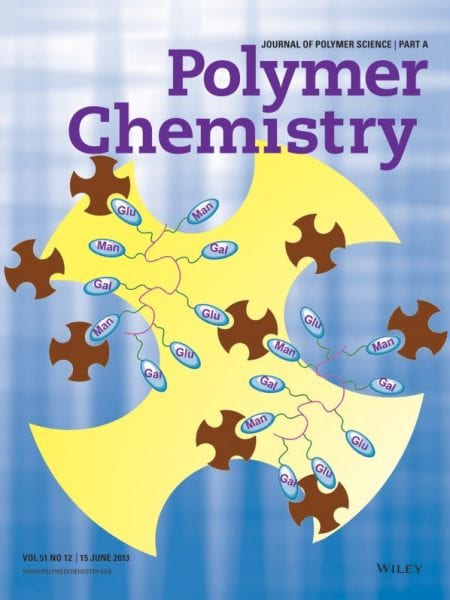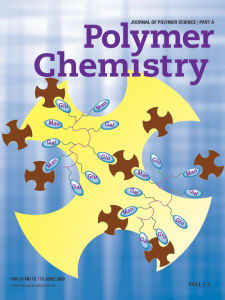In Volume 51, Issue 12 of the Journal of Polymer Science Part A: Polymer Chemistry the editors’ spotlight falls on: “Synthesis and Photovoltaic Performance of Donor-Acceptor Polymers Containing Benzo[1,2-b:4,5-b’]dithiophene with Thienyl Substituents,” “Optimization of Direct Arylation Polymerization Conditions for the Synthesis of Poly(3-hexylthiophene),” and “Synthesis of Imidazole-terminated Hyperbranched Polymers with POSS-branching Points and their pH Responsive and Coordination Properties.”
Recent research groups have attached different substituents to benzo[1,2-b:4,5-b’]dithiophene (BDT) in order to alter the molecular orbital energy levels and increase the polymer solubility. Attachment of solubilizing long alkyl chains led to synthesis of more soluble polymers with improved optoelectronic properties. Mihaela C. Stefan and colleagues synthesized donor-acceptor copolymers of BDT containing thienyl substituent acceptors. The polymer optoelectronic properties were tested in bulk heterojunction solar cells as blends with the acceptor [6.6]-phenyl-C61-butyric acid methyl ester.
Direct arylation polymerization (DArP) is viewed as an alternative for Stille or Suzuki polycondensations with fewer steps and eliminating toxic organotin waste. This method allows preparation of high-molecular-weight conjugated polymers without the need to metallate monomers. Barry C. Thompson and collaborators optimized the DArP synthesis of poly(3-hexylthiphene) (P3HT). Researchers produced P3HT with the physical and electronic properties similar to a Stille polycondensation without the complicated polymerization procedure.
The ability to functionalize surface hyperbranched polymers to respond to stimuli increased the range of applications for which these polymers are candidates. Hyperbranched polymers have synthetic advantages over dendrimers and are usually prepared via one-pot synthesis leading to products with distribution in molar mass and branching. Kensuke Naka and Yasuyuki Irie prepared imidazole-terminated hyperbranched poly(amidoamine)s with POSS-branching units. The pH titrations showed well-defined one-step titration curves suggesting the terminal functional groups inhibited association with neighboring branches.


















